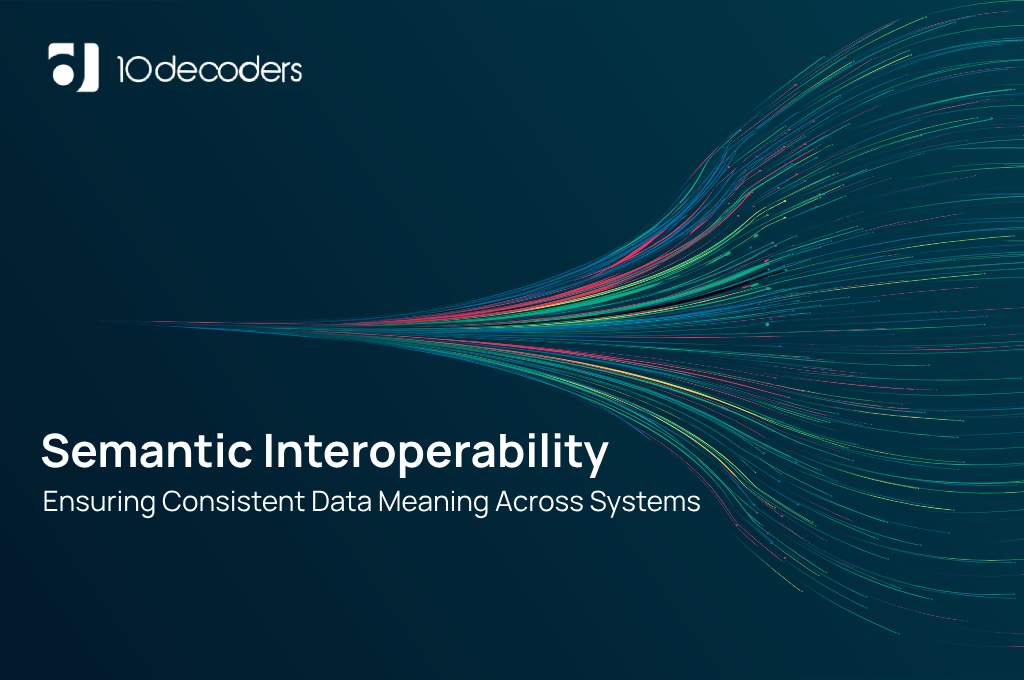Semantic Interoperability: Ensuring Consistent Data Meaning Across Systems
In today’s complex world of data systems, interoperability has become a key focus, especially in sectors such as healthcare, finance, and public services. At the heart of this focus is semantic interoperability, which goes beyond mere data exchange to encompass the understanding and interpretation of data across different systems. This blog aims to explore the nuances of semantic interoperability, shedding light on its vital role in maintaining consistent data meaning across a range of platforms.
The Essence of Semantic Interoperability
Semantic interoperability transcends the basic exchange of information between systems. It involves the ability of different systems to not only exchange data but to interpret, understand, and use this data in a consistent manner. This level of interoperability is crucial for the accurate and meaningful use of information, particularly when decisions based on this data carry significant implications.
Why is Semantic Interoperability Crucial?
Imagine a scenario in healthcare where patient data is shared between various specialists, healthcare providers, and patients themselves. Semantic interoperability ensures that medical terms, patient records, and treatment plans are understood uniformly across all interfaces. Without it, the risk of misinterpretation could lead to misdiagnosis or incorrect treatment, potentially having dire consequences.
The Technicalities of Achieving Semantic Interoperability
Achieving semantic interoperability is not a straightforward task. It requires the integration of various components:
- Semantic Interoperability: Ensuring Consistent Data Meaning Across Systems
- Common Terminologies and Ontologies: Establishing a common language and set of terminologies is essential for the accurate interpretation of data. Ontologies, which define the relationships between different terms, play a vital role in this.
- Advanced Data Mapping Techniques: These techniques involve translating data from one format to another, ensuring that the meaning is preserved and understood correctly by the receiving system.
- Sophisticated Algorithms and AI: Advanced algorithms and AI technologies are increasingly employed to interpret complex data sets and ensure semantic consistency.
Real-World Applications and Benefits
Semantic interoperability has far-reaching applications across various sectors:
- Healthcare: In healthcare, it enables better coordination of patient care, improved outcomes, and enhanced patient safety by ensuring that all stakeholders have a consistent understanding of patient data.
- Government Services: For government agencies, it facilitates efficient and effective public service delivery, ensuring that data shared across different departments is accurately interpreted and acted upon.
- Finance and Banking: In finance, semantic interoperability ensures that transactions and customer data are processed and understood consistently across different banking systems and platforms.
The Challenges of Implementing Semantic Interoperability
Despite its clear benefits, the path to achieving semantic interoperability is filled with challenges:
- Complexity of Standardization: Developing and implementing universal standards and terminologies is a complex and ongoing endeavor.
- Integration with Legacy Systems: Many organizations use legacy systems that are not inherently designed for semantic interoperability, making integration a significant challenge.
- Ensuring Data Privacy and Security: As data is shared and interpreted across multiple platforms, maintaining its privacy and security is paramount.
The Future of Semantic Interoperability
Looking ahead, the role of semantic interoperability is set to become even more pivotal. With the rapid advancement of technologies like AI and machine learning, along with the increasing emphasis on data-driven decision-making, the need for accurate and consistent data interpretation across systems will only grow.
Expanding Horizons: Broader Implications of Semantic Interoperability
The implications of semantic interoperability extend beyond individual sectors, influencing the broader landscape of global data exchange and cooperation. In the field of research and academia, for instance, it facilitates collaborative studies and shared insights across international boundaries, enabling researchers to seamlessly integrate and analyze data from diverse sources. This unified understanding is particularly critical in fields like epidemiology and climate science, where global data sharing is key to addressing worldwide challenges. In the corporate world, semantic interoperability aids in aligning multinational operations, ensuring that data from different branches or departments is consistently understood and utilized, enhancing operational efficiency and decision-making processes.
Furthermore, as we venture into the era of smart cities and Internet of Things (IoT), the role of semantic interoperability in connecting various devices and systems becomes increasingly crucial. It ensures that data collected from myriad sensors and devices can be integrated, providing comprehensive insights for urban planning, resource management, and improving the quality of life for citizens. This expansion of semantic interoperability across different domains showcases its significance as a linchpin in the modern interconnected world, emphasizing the need for ongoing innovation and collaboration in its development and implementation.
Innovations on the Horizon
Emerging technologies are continually shaping the future of semantic interoperability. For instance, the use of blockchain for secure and transparent data sharing holds great promise. Similarly, the evolution of AI and natural language processing technologies is set to enhance the capabilities of systems to interpret and utilize data more effectively.
Semantic interoperability is not just a technical necessity; it is a foundational component for the effective functioning of modern data-driven systems. Its importance spans across sectors, facilitating accurate communication, enhancing decision-making, and ensuring the safety and well-being of end-users. As we continue to navigate an increasingly interconnected world, the pursuit of advanced semantic interoperability remains a crucial endeavor, one that requires collaborative efforts, continuous innovation, and a commitment to standardization and excellence.



